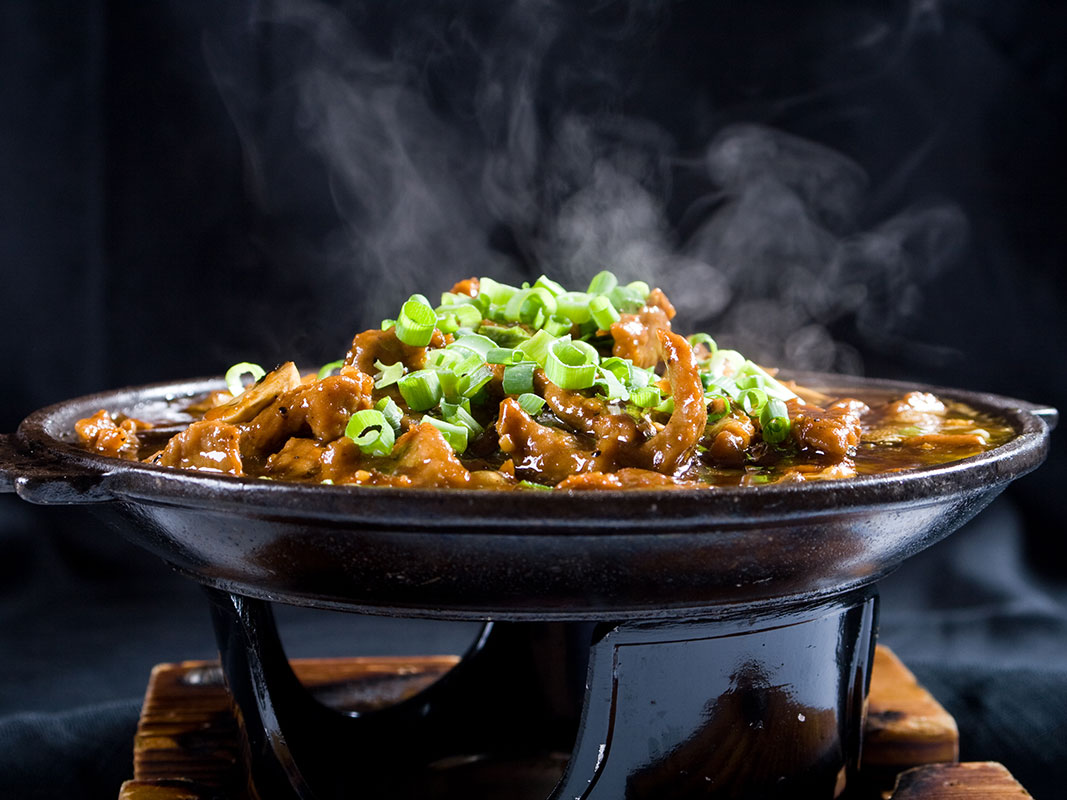Steaming is one of the healthiest methods to cook your food. If you want your meat to be loaded with taste, without loading your body up with the extra kilograms, steaming is the way to go. When cooking meats such as lamb , steaming removes the fat from the meat so it can be easily discarded whereas conventional cooking methods such as grilling, baking or frying, cook the fat into the meat. Getting rid of the fat makes the meat lower in calories and lower in cholesterol. Also, steaming removes the need for cooking oil or fat, which results in lighter and healthier meals.
Many of the vitamins and minerals are lost with some conventional methods of cooking. Steaming ensures that vitamins such as vitamin B, riboflavin, thiamine, niacin, biotin, B12, pantothenic acid and vitamin C, as well as minerals such as calcium, phosphorous, potassium, and zinc are retained.
Steaming is a moist heat cooking process. The meat does not come into contact with the cooking liquid but instead is cooked by surrounding steam, sometimes under pressure. Steaming results in tender, well flavoured, juicy meat with minimum weight loss or shrinkage. Steaming under pressure is fast and easy, saves on energy and provides accurate meat portioning and cost control.
Various steaming methods:
Atmosphere steaming – meat cooked directly or indirectly with steam in the following ways:
Directly in a steamer. Steam is generated within the steaming chambers and is fed into the chambers from a separate boiler.
Indirectly or in covered pan. Sealed containers of food are placed over or in a deep pan of boiling water. Perforated trays or vessels can be used but this method requires pans or containers with tight fitting lids to contain steam.
High pressure steaming
Using purpose-built steamers, which generate high pressure steam for ultra quick cooking. Mainly used for vegetables and processed meat products.
Combination and steam oven cooking
High capacity steamer ovens can cook by steam, using moist heat or dry heat, or a combination of both.
Vacuum cooking by steam (sous-vide)
Used to cook food in vacuum-sealed plastic pouches, by combination of steam and convection oven, between 70 to 100°C (158 to 212°F).
Low to moderate temperature steaming
Modern equipment makes it possible to cook meat between between 70 to 100°C (158 to 212°F). This method is ideal for steam blanching, preserving, steam cooking, cooking in vacuum (sous-vide), thawing, reconstituting and reheating meat dishes.
Steam and smoke overn
The oven allows cold and hot smoking of cured meats and provides a steam-cooking cycle. The unit operates with fan-forced smoke from burning wood sawdust, gas or electric burner.
Tips on steaming
Use a tight fitting lid or have steamer door securely closed to retain heat and moisture. If food is cooked in basins or moulds, grease these well and firmly cover with grease-proof kitchen paper, cloth or foil to prevent sticking, or moisture penetrating food. Steaming is practical for thawing and quickly reheating prepared foods.

